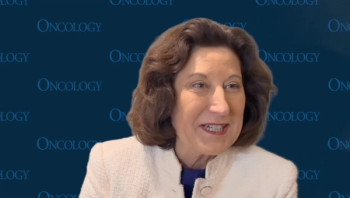
New Model Offers Absolute Breast Cancer Risk Assessment for Atypical Hyperplasia
A new model using only age at biopsy and number of atypia foci could improve absolute breast cancer risk estimates in women with atypical hyperplasia.
A new model using only age at biopsy and number of atypia foci could improve absolute breast cancer risk estimates in women with atypical hyperplasia, according to a new study presented at the 2015 American Society of Clinical Oncology (ASCO) Breast Cancer Symposium in San Francisco (
Atypical hyperplasia (AH) is associated with an increased risk of breast cancer; approximately 10% of all benign biopsies show AH. Models previously used to try and determine risk, such as the Breast Cancer Risk Assessment Tool (BCRAT) model or the International Breast Cancer Intervention Study (IBIS) model, offer barely better accuracy than a coin flip, said Amy C. Degnim, MD, of the Mayo Clinic in Rochester, Minnesota.
The new study involved a development cohort at the Mayo Clinic and a validation cohort at Vanderbilt University, and used a Lasso approach to assess 19 variables for inclusion in a prediction model. The new model was also compared to existing risk prediction models.
The development cohort had 699 women with AH, with a median follow-up of 8.1 years; there were 142 breast cancer events in this group. In the validation cohort, there were 461 women and a median follow-up of 11.4 years; there were 114 breast cancer events in that group.
The Lasso analysis yielded only two covariates for the model: age at biopsy, and the number of foci of atypia. The concordance statistics at 5, 10, and 30 years in the development cohort were 0.607, 0.633, and 0.607, respectively. In the validation cohort at Vanderbilt, the concordance statistics were 0.557, 0.584, and 0.557, respectively.
The researchers developed simple tables matching 5-year age groups to 1, 2, or 3 foci of atypia, with an absolute risk value for each combination. This was done for the 5-year, 10-year, and 30-year absolute risk for breast cancer. There will also be online tools to quickly assess a patient’s risk.
Degnim said that the new model showed much better calibration than existing models in predicting numbers of cancers. “We propose a new model for predicting breast cancer risk in women with AH,” she said, adding that the use of absolute rather than relative risk is helpful.
A. Marilyn Leitch, MD, of the University of Texas Southwestern Medical Center, was the discussant for the session, and noted that “it does require specific detail in the pathology report if you’re going to use this model. You have to have your pathologist describe the foci and that there be consistency in this description among patients.”
She also pointed out that a high score using this model may motivate a patient for intervention, though most patients will fall into lower risk categories. “What we need is more precise risk definition to achieve the goal of providing women with information that would influence their choice for intervention,” she said. “The goal of assigning risk is to be able to do something about it.”
Newsletter
Stay up to date on recent advances in the multidisciplinary approach to cancer.















































































